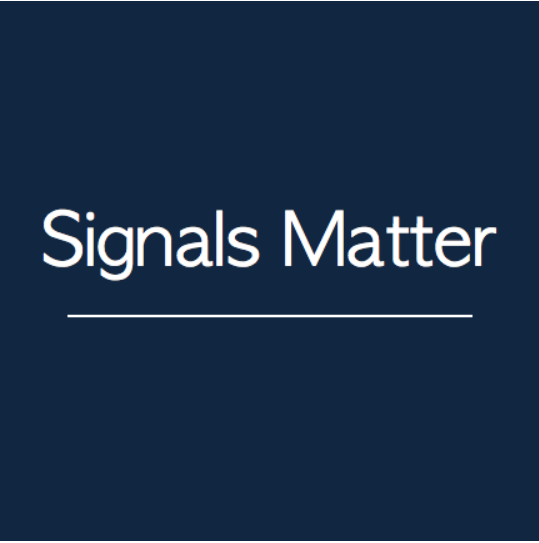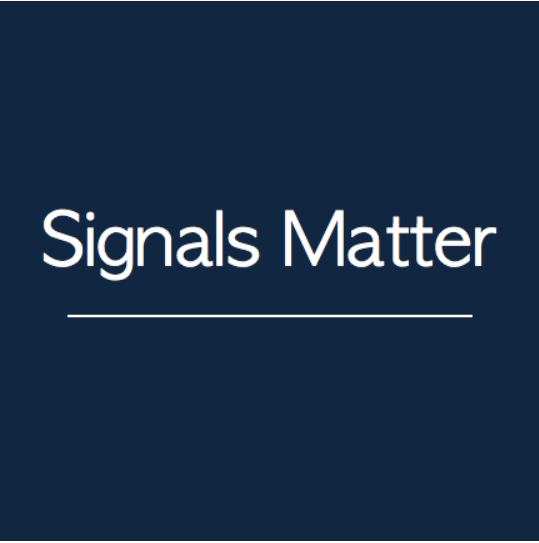We can’t emphasize enough how dangerous the current macro setting is in the wake of a deliberately strong and illiquid Dollar.
The Illiquid Dollar: We Showed You So
Over the years, we have written and reported a great deal about the US Dollar and the ironic mix of its over-creation yet lack of liquidity.
These odd liquidity forces, as argued since the first repo crisis of late 2019, combined with a now weaponized US Dollar on the backs of intentionally rising rates by the Fed, all spell short-term power for the Greenback and long-term misery for just about every other asset class and economy in a now openly fractured global financial system.
As to the stark reality of this illiquid Dollar, rather than just say “we told you so,” it would be far better to “re-show-you so” by making specific reference to the following report, published in December of 2021.
The Ignored Spark of the Next Financial Crisis
Since penning that report just under 10 months ago, it is time to revisit the implications of an illiquid Dollar and the financial crisis we warned of then and now find ourselves today.
Why Strong is Weak
It may intuitively feel good to see one’s currency beating all the others and puff American chests in a kind of proud admiration for the strongest currency on the block.
Nothing, however, could be further from the truth.
In fact, bragging about a strong US dollar in the global neighborhood today would be akin to bragging about being the healthiest (yet terminally ill) patient in an overcrowded hospice center.
In the end, of course, all paper currencies revert to the value of their paper, which as Voltaire reminds, is zero.
Or as J.P. Morgan warned years ago, gold is the only money, the rest is debt.
But I digress…
In simplest terms, the strong US Dollar is only relatively strong because every other currency is tanking faster by the second, and this tanking is a direct result of the US Dollar itself.
Crazy. Just crazy…
How We Got Here
So, how did we, and the rest of the world’s tanking currencies, get to this embarrassing as well as fatal turning point?
As indicated in the above and other reports, the answers lie in the otherwise long and sordid history of central bank fraud, derivatives madness, repo-to-Euro-Dollar obfuscation and just plain ol’ global debt addiction.
Again, and without repeating the core article referenced above, despite trillions in printed/mouse-clicked US Dollars, much of those dollars are all tangled up in the morass of a highly illiquid derivatives market and increasingly illiquid Euro Dollar market.
As we indicated then:
“The first overt signs of this danger emanated from the cash-poor (i.e., illiquid) repo market which reared its ugly head in September of 2019.
This was a neon-flashing signal of long-term trouble ahead. And it could not be conveniently blamed, like nearly everything else the policy makers have done wrong, on COVID.
In September 2019, we sifted through all the confusing minutia and noise behind the panic in the otherwise open-fraud scheme that is the U.S. repo market (i.e., private banks levering GSE deposits for guaranteed payouts from Uncle Sam which the U.S. taxpayer funds).
Despite all this noise, and despite being completely ignored (and deliberately downplayed) by an otherwise teenage-savvy mainstream financial media, the entire repo story simply boiled down to this: There weren’t enough available dollars to keep it (and the banks) going.
As a result, the 2019 Fed printed more dollars and immediately dumped a $1.5 trillion rollover facility into the repo pits.
Much, much more followed.”
And boy did it follow. Within a matter of months, the Fed began providing daily liquidity boosts of over $2T in overnight money-market loans to the increasingly illiquid reverse repo swamp.
The Euro Dollar: All Tangled Up in Blues…
The other skunk in the illiquid Dollar woodpile was what we called the “ticking timebomb” of the misleadingly-named Euro Dollar market, described as follows:
“In fact, Euro Dollars have been floating around the world in greater force since the mid-1950s.
But banks (and bankers) always come up with clever ways to make simple Euro Dollar transactions complex, as they can easily hide all kinds of greed-satisfying and wealth-generating schemes behind such deliberate Euro Dollar complexity.
Specifically, rather than foreign banks using U.S. Dollars overseas (i.e., Euro Dollars) to make simple, direct loans to corporate borrowers that can be easily tracked and regulated on the asset and liability columns of offshore bank balance sheets, these same bankers have spent the last few decades getting more and more creative with the Euro Dollar – which is to say, more and more toxic and out of control.
Rather than using Euro Dollars for direct loans from Bank “X” to Borrower “Y,” offshore financial groups have been busy using these Euro Dollars for complex inter-bank borrowing, swap schemes, futures contracts, and levered derivative transactions.
In short, and once again: More derivative-based poison (and extreme banking risk) at work.”
Tangled = Unusable, Unavailable and Illiquid
All of this scheming, leverage and swapping boils down to not enough available (i.e., liquid) USD in a global financial system in which nearly everything—from debt, to oil to derivatives—has to be paid in increasingly scarce and hence expensive Dollars.
In short, as the USD rises, it forces all other currencies to fall.
Huh?
We remind that nearly $14T in USD-denominated debt is owed by both emerging market and developed market economies.
As the USD rises in strength on the back of Powell’s weak mind and tangled derivaitves, Dollar-desperate nations from Argentina to Japan find themselves with not enough Greenbacks to pay their debts, which forces them to print (i.e., debase) more of their local currencies to make debt payments.
But Japan takes the cake for debasing its own currency all on its own, as no nation has ever loved a money printer and currency-debaser more.
This might explain why Japan is leading the charge in dumping its USTs into the FOREX markets, which only adds more pressure to rising yields and hence rising rates.
Thanks Kuroda—just one more central banker with a mouse-clicker gone mad…
In short: The strong USD is crippling the word, and that world, as we’ve written numerous times, is de-dollarizing at a steady and irreversible pace.
No shocker there.
Other Domino Effects of the Illiquid Dollar
It’s also worth noting that a current and temporarily strong USD effectively knee caps US exports, as anything that is actually produced in the USA is now far more expensive and hence less competitive, further adding to US trade deficits (not to mention budget deficits) in a world marching toward a financial cliff.
As importantly, as the USD rises in a new environment of rising rates and less liquid dollars, commercial banks in the US (10X levered) and in Europe (20X levered) are exploiting this higher rate setting to de-lever their derivatives exposure, which contracts a fatally toxic $2 quadrillion derivatives market, thereby making that ticking timebomb one tick closer to full implosion.
So, no, a strong and illiquid Dollar (world reserve currency) is hardly good for America, the markets or the world.
How to Fix the Poison?
For those waiting for the Fed to fix the morass we now find ourselves, there is no miracle cure but merely a choice among poisons.
Pick Your Poison
As we’ve warned numerous times, the Fed is caught between a rock and hard-place of its own stupid design.
Should Powell continue his ruse to “fight inflation” (which is in fact 50% unreported) using rising rates, then the USD will keep rising until the global (and debt-driven) economy completely buckles under the weight of unpayable IOU’s while truth-allergic (as well as history-blind and math-inept) politicos scramble from one government-managed media platform to the next blaming the implosion they engineered on a virus, a Vladimir or a coal plant.
However, once the US policy makers admit we are in a recession, there will be no way to fight that recession without mouse-clicking more USD and hence forcing the Dollar and rates down rather than up, as no recession in history has ever been defeated with high rates and a roaring currency.
Alas, what is high today will be low tomorrow.
Pivot Point?
For now, I still see Mr. Powell heading toward in inevitable (though not imminent) pivot from hawk to dove once markets and economies are obviously in even more peril than today.
In the interim, the deliberate efforts by the Fed to engineer a painful recession after they engineered the greatest asset bubble (and wealth transfer) in history can only be seen as inherently and deliberately evil or unpardonably stupid.
Pick your own verdict. I’d vote for both…
At that pivot point, the dollar will fall, inflation will rise and stagflation will become the new normal for many years to come, for it’s also worth noting that no modern nation has ever enjoyed a “soft-landing” in a recessionary backdrop in which inflation was greater than 5%–and we are already far ahead of that marker.
So, and again, pick your poison: Depression or Inflation?
A Prize for the Guilty?
As for this current and one-way trip toward global recession, we can thank Mr. Powell (as well as Bernanke, Greenspan and Mrs. Yellen), none of whom deserve a Nobel Prize, and the fact that Bernanke now has one is just the final proof that this rigged to fail system has completely lost any semblance of sanity, honesty, ethics or economic decency.
Bernanke with a Nobel Prize makes as much sense as Bernie Madoff winning “trader of the year”—but then again, neither ethics or truth ever stopped Madoff from becoming the NASDAQ’s chairman…
Anyone who tracks the Fed’s central and undeniable role in setting up the world for a debt-driven disaster already knows how bogus this latest homage to the least worthy is, and we’ve written too many articles and books to make the Fed’s guilt any more clear today than we have already made it clear yesterday.
As for debt-soaked, Frankenstein markets reeling under rising rates and ever scarcer Dollars, we are nowhere near a bottom and no way out of the woods of ever more volatility to come.
This is the time for extreme risk management and carefully, actively managed portfolios, of which we are uniquely positioned to provide.
Signals Matter Market Reports generally reflect the company’s long-term macro views and are posted free of charge each week at www.SignalsMatter.com, on LinkedIn, and directly to your inbox by Signing Up Here. Our Portfolio Solutions are generally geared to shorter timeframes, may therefore differ from our longer-term perspectives, and are available to Subscribers that Join Here. For three ways to engage with us, please click: 3 Ways to Engage.





Very interesting. What have the year to date returns of your portfolios been?
For SEC/FINRA reasons we can’t publish those numbers online but feel free to reach out to Tom. I can say they’ve been good 😉